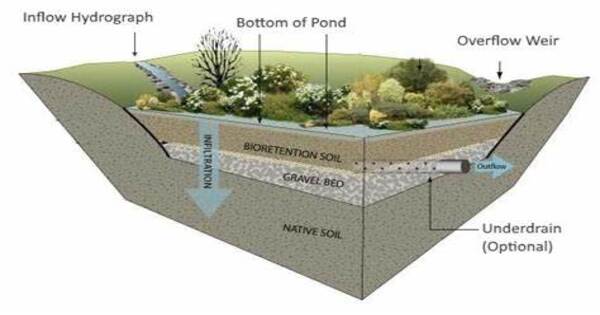New research has found that the presence of wetlands and retention ponds alongside major highways resulted in an average reduction of nearly 75% in the mass of tire wear particles discharged into aquatic systems. According to the researchers, while the number of retention ponds and wetlands in the UK is relatively limited, the study has broad implications for the most efficient approaches to minimize the possible global repercussions of tire pollution.
Retention ponds and wetlands built as part of large road projects can lower the amount of tire particles entering the aquatic environment by 75% on average, according to recent research.
The study analyzed samples collected alongside some of the busiest routes in South West England and the Midlands, many used by more than 100,000 vehicles each day.
Our findings are encouraging and contribute to a better understanding of the scope and nature of tyre pollution. Similar drainage assets are employed on a global scale, therefore these findings are widely applicable to the management of tyre wear particle pollution.
Florence Parker-Jurd
Tyre particles were identified in all 70 samples, corroborating prior research findings that suggest they pose a significant environmental concern. However, the existence of wetlands and retention ponds resulted in an average reduction of over 75% in the mass of tire wear particles discharged into aquatic waters, providing protection for rivers and the ocean beyond.
The study also discovered that tyre wear particles dominated other types of microplastics, such as plastic fibers and fragments, in the samples collected, but they were also eliminated in far larger amounts.
The researchers say that while the number of retention ponds and wetlands is quite small, in terms of the UK’s entire road network, the study has international significance as to the most effective ways to mitigate against the potential impacts of tyre pollution on a global scale.
They have also recommended that the maintenance of retention ponds and wetlands should be considered a major priority so that their apparent benefits, when it comes to reducing the flow of tyre particles from roads to rivers, continue to be realised.

The research is published in the Environmental Science and Pollution Research journal, and was carried out by scientists from the University of Plymouth and Newcastle University. It was funded by UK National Highways. Florence Parker-Jurd, Associate Research Fellow in the University of Plymouth’s International Marine Litter Research Unit, is the study’s lead author.
She stated, “Retention ponds and wetlands are built as part of highway projects primarily to slow flow and prevent downstream floods, but also to filter pollutants. This study sought to determine whether the present drainage systems in place along areas of the UK’s vital road network have the capacity to halt the development of tyre pollution. Our findings are encouraging and contribute to a better understanding of the scope and nature of tyre pollution. Similar drainage assets are employed on a global scale, therefore these findings are widely applicable to the management of tyre wear particle pollution.”
Dr Geoff Abbott, Reader in Organic Geochemistry in the School of Natural and Environmental Sciences (SNES) at Newcastle University, has previously developed a breakthrough method using pyrolysis-gas chromatography-mass spectrometry (Py-GC-MS) to detect tyre-derived particles in the environment.
He explained, “Py-GC-MS is a highly productive approach for unraveling and quantifying the monomeric components of microplastics in the environment. We used it to identify certain micro- and nanoplastic components that are clearly linked to car tyre treads. This has allowed us to obtain hard data on the overall amount of tyre wear particles that are accumulating in the influent, effluent, and sediments of the retention ponds and wetlands under study.”
The current study relies on previous research conducted by experts in Plymouth and Newcastle, which demonstrated that tyre particles can be delivered directly to the ocean via the atmosphere or transmitted into rivers and sewers via rainwater.
The current study’s senior author is Professor Richard Thompson OBE FRS, the Head of the International Marine Litter Research Unit.
He continued, “Tyre particles are regarded to be one of the largest contributors of microplastic contamination worldwide. This finding suggests that existing road network elements can prevent water from flowing into rivers and seas. However, the quantity of these features is minimal in comparison to the overall road network, and previous research has shown that wind raters disseminate more tyre wear particles than water. Finally, we must explore more systemic answers, maybe through improved vehicle tyre design.”
















